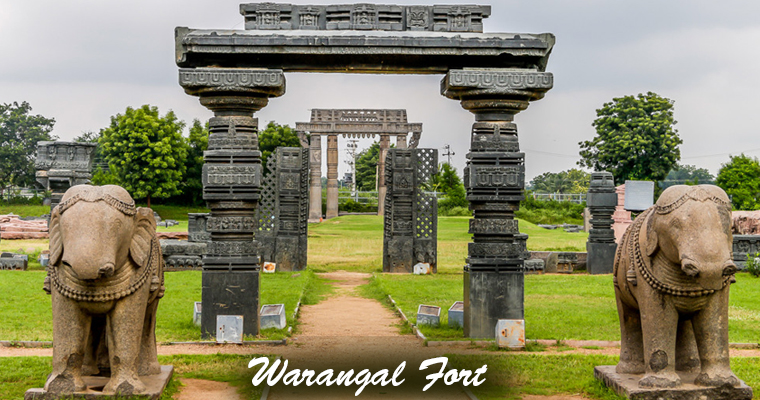Temples in Warangal City
Warangal is known for its impressive temples, many of which date back to the Kakatiya dynasty. These temples are renowned for their intricate carvings, unique architectural styles, and historical significance. Here are some of the most notable temples in Warangal.
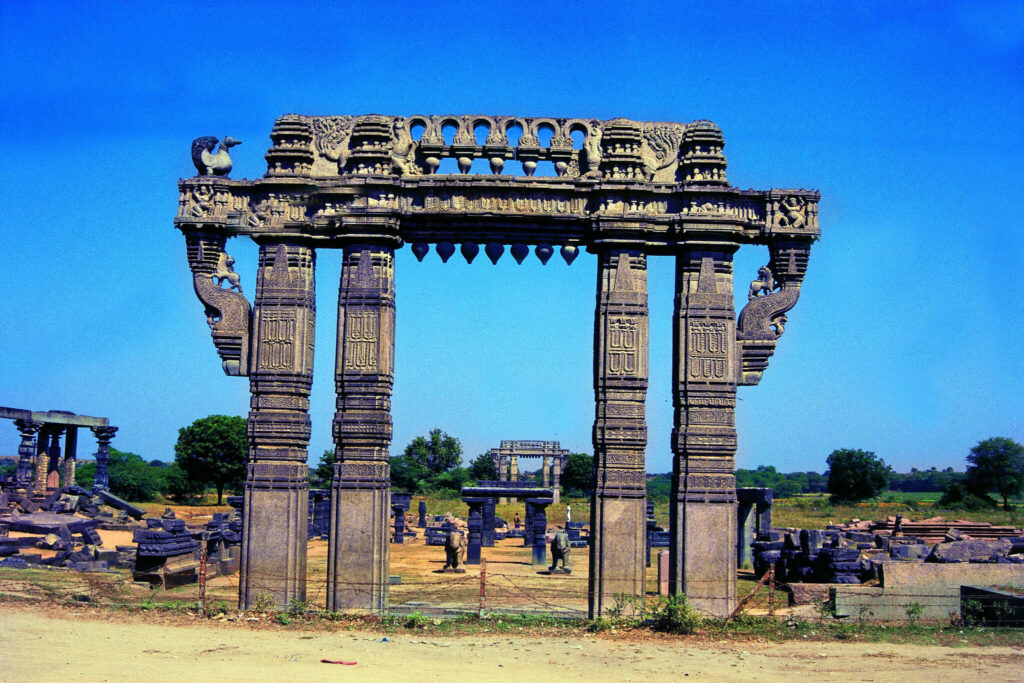
Most popular temples in warangal the great Thousand Pillar Temple
The Thousand Pillar Temple, also known as the Rudreswara Swamy Temple, is one of the most iconic architectural landmarks of Warangal, Telangana. Built in the course of the twelfth century by way of the Kakatiya dynasty, this temple is celebrated for its extraordinary structure, complicated carvings, and precise design. It stands as a testimony to the cultural and artistic achievements of the Kakatiya duration. Thousand Pillar Temple History:
Construction and Patronage:
The temple became constructed around 1163 AD by using Rudra Deva, an outstanding ruler of the Kakatiya dynasty, who named it after himself because the Rudreswara Swamy Temple.
The Kakatiya rulers, known for his or her devotion to Hinduism, had been additionally remarkable buyers of art and structure. They aimed to create an area that could reflect the artistic excellence of their time even as serving as a spiritual and cultural center.
The temple is dedicated to Lord Shiva, Vishnu, and Surya (the sun god), indicating the Kakatiya rulers’ willpower to a mix of Shaivism and Vaishnavism.
Unique Architecture:

The Thousand Pillar Temple is built in a trikuta (3-shrine) style, with shrines devoted to Shiva, Vishnu, and Surya.
The celebrity-formed structure and the thousand intricately carved pillars are its most distinguishing features. Despite the name, the pillars are not actually counted as a thousand, but they’re so severe and intricately located that they supply the impression of one thousand.
The pillars are designed with fantastic symmetry and precision, each with precise carvings and motifs. The mandapa (main corridor) is supported by way of those pillars, which might be carved with scenes from Hindu mythology and nature. Also, very attracted temples in Warangal.
Significance of the Nandi Sculpture:
A huge Nandi (sacred bull) statue faces the main shrine of Lord Shiva. This Nandi is meticulously carved out of black basalt stone and is known for its lifelike detail.
The Nandi at the Thousand Pillar Temple is one of the most celebrated sculptures of its kind, displaying a degree of workmanship that makes it a tremendous part of the temple’s enchantment.
Engineering Marvels:
The temple changed into built the usage of sandstone and granite, which became no longer most effective durable but also allowed for pleasant detailing within the carvings.
The temple has a properly designed drainage device to protect it from water logging, which changed into advanced for its time.
The impact of invasions:
The Thousand Pillar Temple suffered substantial harm during the invasions of the Delhi Sultanate in the 14th century. Under the management of Malik Kafur, the navy of the Sultanate attacked the Deccan area, such as Warangal, main to the desecration of many Hindu temples, such as this one.
Many systems in the temple complex were broken or destroyed, leaving components of the temple in ruins.
Restoration Efforts:
In latest decades, recovery efforts have been undertaken with the aid of the Archaeological Survey of India (ASI) to keep and restore the temple’s glory.
Conservationists have worked to restore the pillars, sanctums, and tricky carvings, although some components of the authentic structure have been misplaced to history. The grate history of temples in Warangal
Modern Recognition and Heritage:
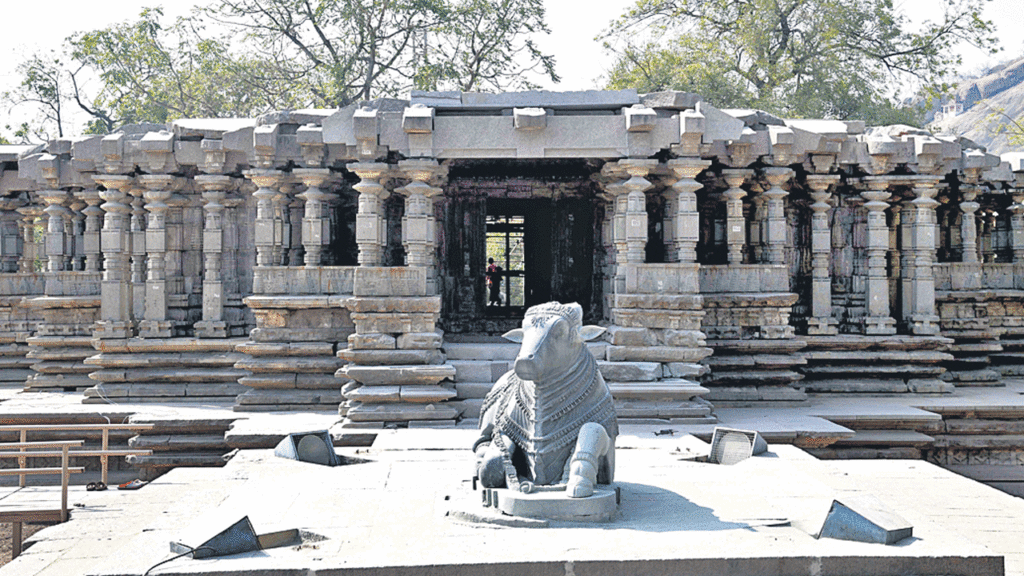
Today, the Thousand Pillar Temple is a lively website of worship and a significant traveller appeal. It represents the Kakatiya dynasty’s wealthy heritage and has resulted in an architectural image of Telangana.
Its layout has inspired many factors of local structure and holds excellent ancient, cultural, and religious importance.
The Thousand Pillar Temple is an architectural surprise, acknowledged for its problematic sculptures, finely carved pillars, and delightful megastar-shaped architecture. It is a tribute to the skilled craftsmanship and devotion of the Kakatiya dynasty. It is a must-visit history website for all those interested in historic Indian structure and history.
Warangal has an extended and prosperous record, originating over 1000 years. The metropolis gained prominence because it was the capital of the Kakatiya dynasty from the 12th to the 14th century and is extensively celebrated for its cultural and architectural contributions. The vicinity has visible the rise and fall of various empires, everyone leaving their mark on Warangal’s historical and cultural panorama.
Bhadrakali Temple
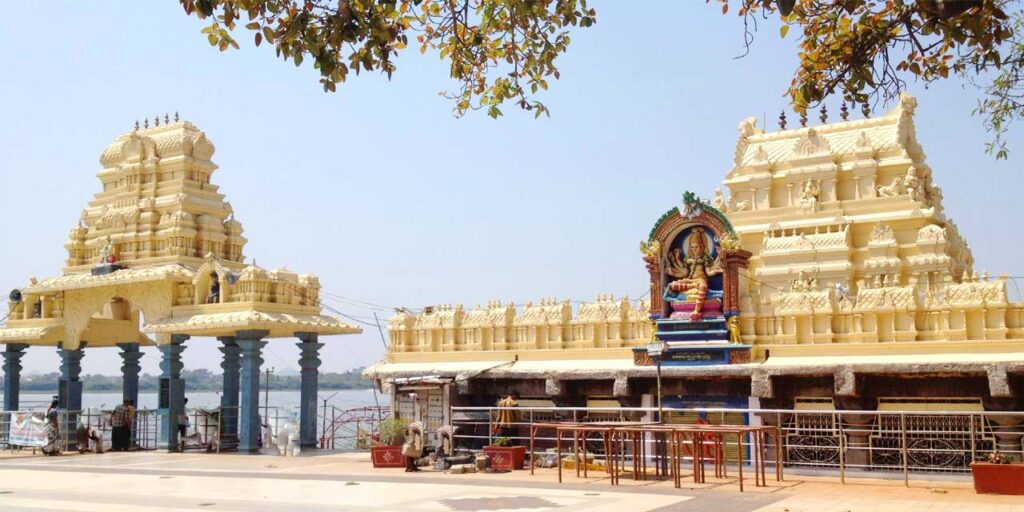
The Bhadrakali Temple in Warangal is one of the oldest and most revered temples in Telangana, dedicated to Goddess Bhadrakali. The temple has a long history that dates back to the Chalukya period, and it holds religious, historical, and cultural significance. Located on a hilltop near the serene Bhadrakali Lake, this temple is a popular pilgrimage site and an architectural landmark.
Bhadrakali Temple History:
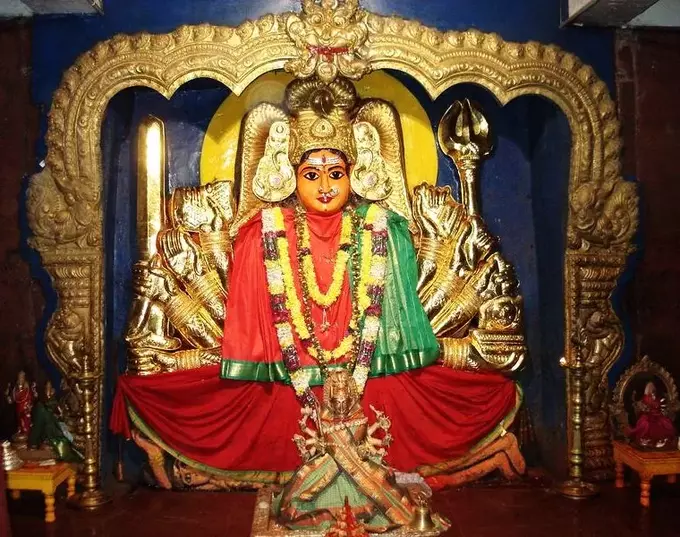
The Bhadrakali Temple became built throughout the seventh century AD with the aid of the Chalukya dynasty. The Chalukyas had been seemed for their devotion to Shakti worship and that they committed this temple to Bhadrakali, a fierce shape of the goddess associated with strength and protection. The temple reflects early South Indian architectural patterns, with influences of Chalukya structure obvious in its form and carvings.
Association with the Kakatiya Dynasty:
The temple gained prominence in the course of the reign of the Kakatiya dynasty (12th–14th centuries), who taken into consideration Goddess Bhadrakali as their circle of relative’s deity. The Kakatiya’s, who dominated from Warangal, extended and renovated the temple and made it a great spiritual center.
They believed that the goddess blanketed their state and warriors, and her fierce issue symbolized their power and sovereignty. This association in addition expanded the temple’s fame, making it a vital a part of the Kakatiya capital’s spiritual life.
Architectural Features:
The Bhadrakali Temple homes a huge stone idol of Goddess Bhadrakali with eight arms, each retaining a weapon, symbolizing her electricity and protective powers. This idol is precise and portrays the goddess in a effective and majestic form.
The temple’s surroundings, along with Bhadrakali Lake, upload to the temple’s serene and non-secular surroundings. The lake became probably built or elevated with the aid of the Kakatiyas and serves as a popular website for visitors seeking a peaceful retreat.
Impact of Invasions:
Like many historical websites in Warangal, the Bhadrakali Temple suffered damage during the Delhi Sultanate invasions within the 14th century, particularly below Malik Kafur’s campaign. These invasions disrupted the non-secular and cultural existence in Warangal, leading to the desecration of temples and other structures.
However, the Bhadrakali Temple controlled to live on thru the centuries, and in spite of some harm, it endured to be a place of worship. The greatest story of histories temples in Warangal.
Modern Renovations and Additions:
In current years, efforts were made to repair and renovate the Bhadrakali Temple. The Archaeological Survey of India (ASI) and neighborhood government bodies have undertaken initiatives to hold the temple’s structure and decorate its environment.
In addition to keeping the original temple, some of smaller shrines and modern-day facilities had been delivered round the primary complicated to accommodate the needs of visitors and devotees.
Religious Significance and Festivals:
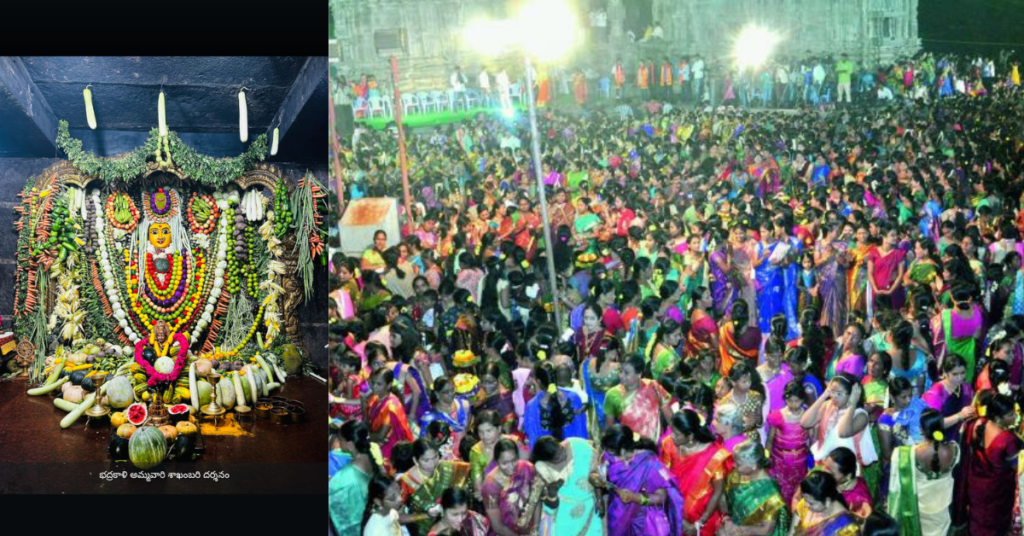
Bhadrakali is worshipped as a powerful temples in Warangal area this pochamma deity who is believed to supply safety and satisfy the dreams of her devotees. The temple is mainly popular at some stage in the pageant of Bonalu, a regional pageant celebrated in Telangana to honor the goddess.
Devotees come from throughout Telangana and beyond to provide prayers and are trying to find benefits, specifically during unique pujas and gala’s dedicated to Shakti.Telagana tourism on of these temples in Warangal.
Current Status and Tourism:
Today, the Bhadrakali Temple isn’t most effective a place of worship however additionally a famous tourist enchantment in Warangal, drawing individuals who come to respect its historical and architectural significance.
The temple’s hilltop place, overlooking the lovely Bhadrakali Lake, provides to its enchantment as a scenic and spiritual destination. The lake additionally gives leisure sports like boating, adding to the overall traveler experience.
The Bhadrakali Temple stands as an enduring image of the Chalukya and Kakatiya dynasties’ devotion, architectural skills, and cultural background. With its wealthy history, religious importance, and scenic placing, the Bhadrakali Temple remains a loved landmark in Warangal, attracting devotees and tourists alike.
Ramappa Temple
The Ramappa Temple, also known as the Rudreshwara Temple, is one of the most significant architectural and cultural landmarks of the Kakatiya dynasty, located in Palampet, about 77 kilometers from Warangal in Telangana, India. The temple is a remarkable example of Kakatiya architecture and has been recognized as a UNESCO World Heritage Site in 2021 for its historical and artistic significance.
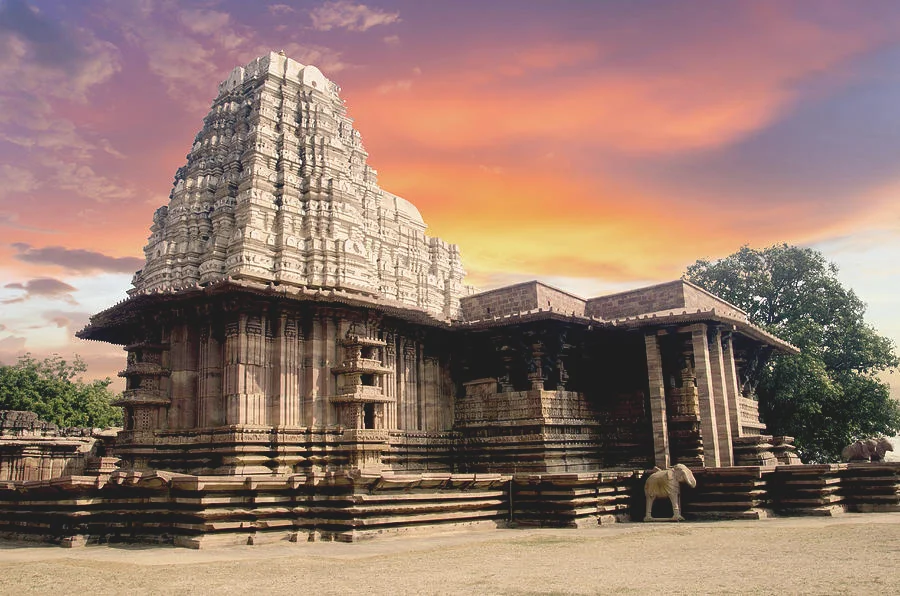
History and Construction
Built By: The Ramappa Temple was commissioned with the aid of Recharla Rudra, a general in the Kakatiya dynasty, during the reign of King Ganapati Deva in the early 13th century, around 1213 AD.
Named After: The temple is dedicated to Lord Shiva and is regularly referred to as the Rudreshwara Temple (after Lord Shiva) or Ramappa Temple (after the chief architect, Ramappa, who’s believed to have designed it). Very beautiful architectures builded temples in warangal
Architectural Significance
Kakatiya Style: The temple in Warangal is a masterpiece of Kakatiya architecture and stands as an image of the dynasty’s artistic achievements. It is constructed in the shape of a celeb, and the problematic carvings and sculptures at the temple partitions showcase the skill and craftsmanship of the time.
Innovative Features:
Floating Bricks: One of the temple’s most well-known functions is using floating bricks in the production of its roof. These bricks had been lighter than normal stones and helped make the shape extra stable.
Elaborate Sculptures: The temple is thought for its beautiful sculptures, depicting numerous gods, goddesses, dancers, musicians, and animals. The carvings on the pillars, partitions, and ceilings are intricately specified and function exquisite examples of Kakatiya artistry.
Sculptural Theme: The sculptures depict scenes from Hindu mythology, including tales from the Ramayana and Mahabharata. The temple’s Natyamandapa (dance corridor) is especially renowned for its exceptional reliefs of dancers and musicians.
Religious and Cultural Importance
Dedication to Lord Shiva: The Ramappa Temple is mostly committed to Lord Shiva, and it continues to be an active vicinity of worship for devotees of the god. The essential sanctum houses a Shiva Lingam, and the temple complex includes shrines for different deities.
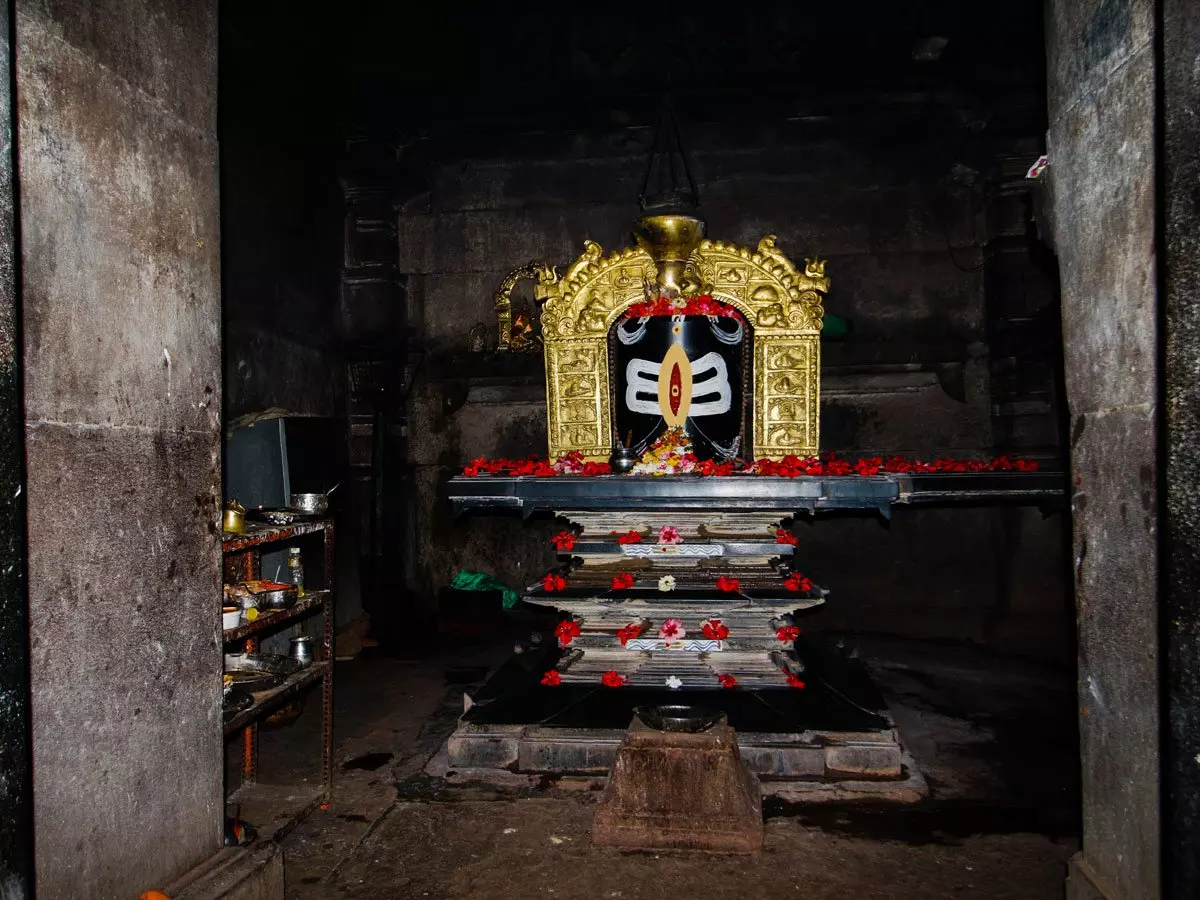
Festivals and Rituals: The temple performs a crucial role within the religious existence of the surrounding location, especially during annual galas and rituals dedicated to Lord Shiva.
Decline and Rediscovery
Decline Under Muslim Invasions: Like many other temples inside the Deccan region, the Ramappa Temple faced overlook and damage during the invasions of the Delhi Sultanate and the Bahmani Sultanate. The Kakatiya dynasty fell in 1323 AD when the Delhi Sultanate took over the vicinity, leading to a decline inside the temple’s protection.
Rediscovery: Despite the damage, the temple remained in large part intact and became rediscovered within the contemporary generation. Its great structure and craftsmanship received attention from scholars and historians, leading to its popularity as a critical cultural monument.
UNESCO World Heritage Recognition
In 2021, Ramappa Temple become inscribed as a UNESCO World Heritage Site, placing it a few of the maximum valuable historical and architectural monuments globally. The temple is praised for its technical improvements, artistry, and representation of the cultural achievements of the Kakatiya dynasty. Legacy and Preservation.

Symbol of Kakatiya Heritage: The temples in Warangal stands as an image of the Kakatiya dynasty’s golden age and is a testimony to the artistic and architectural advances of the duration. The Ramappa Temple no longer only represents the non-secular legacy of the Kakatiya’s but also their contributions to Indian architecture.
Tourism and Study: Today, the temple is a famous vacationer vacation spot and an important website for research and take a look at in the fields of structure, sculpture, and history.
The Ramappa Temple’s mixture of architectural brilliance, revolutionary design, and wealthy cultural records makes it a unique and valuable monument that maintains to inspire admiration for India’s background and the Kakatiya dynasty’s contributions to artwork and structure.
Temples in Warangal one is pochamma temple
The Pochamma Temple in Warangal is an important religious site dedicated to Pochamma, a folk goddess widely worshipped in the Telangana region, particularly in Warangal and its surroundings. The history of the Pochamma Temple is closely tied to the local traditions, cultural practices, and the significance of folk deities in rural and urban life in Telangana.
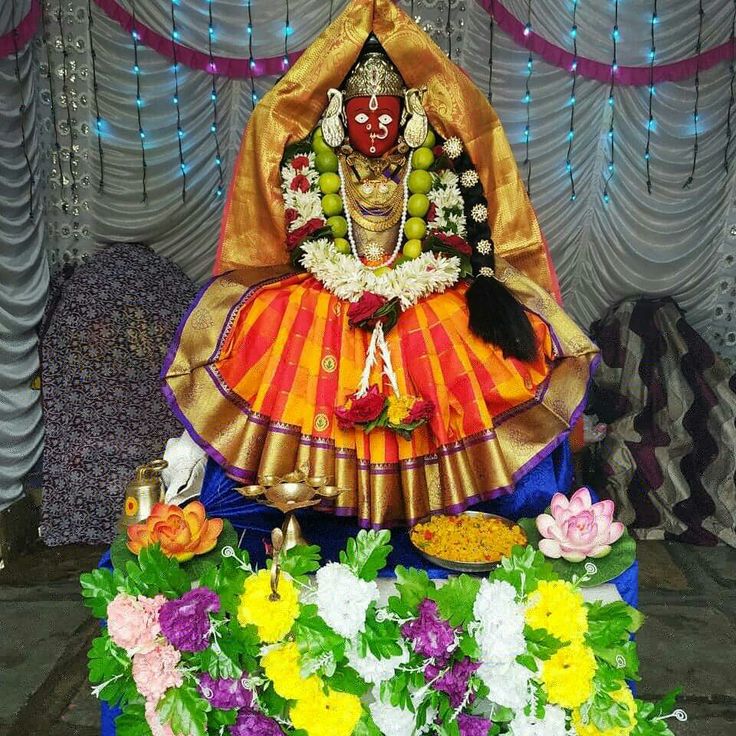
Deity: Pochamma
Pochamma is assumed to be a shielding goddess who gives benefits for the well-being of the community, in particular for the safety and prosperity of villagers, farmers, and youngsters. She is regularly invoked for protection from sicknesses, famines, and herbal calamities.Very power this pochamma temples in Warangal.
Pochamma is considered a shape of Mother Goddess, and her worship is specifically popular in Telangana and Andhra Pradesh. She is associated with the welfare of the network, fertility, and health, in particular among rural groups.
Temple History:
Establishment: The actual date of the Pochamma Temple’s status quo is not clear, as it’s far a part of an historical subculture of folk’s worship that predates the construction of many formal temples. The temple is thought to have existed for numerous centuries, with its roots deeply embedded within the folk traditions of the region.
Cultural and Regional Significance: The temple is enormous within the context of local perception systems in which deities like Pochamma are worshipped alongside the greater mainstream Hindu gods. Unlike temples devoted to gods like Vishnu, Shiva, or Durga, the Pochamma Temple displays the agrarian and village-based practices of the people of Telangana.
Worship Rituals: The temple follows simple yet meaningful rituals. Devotees often visit the temple to search for safety and blessings for accurate fitness, prosperity, and the protection of their families and vegetation. Special services, together with plant life, coconuts, and end result, are made to the goddess, and galas are every now and then held at some stage in vital fairs.
Location and Temple Structure
Location: The Pochamma Temple is placed in Warangal, though there are other temples committed to Pochamma in distinct villages throughout Telangana. The Warangal temple is an essential area of worship for the ones dwelling inside the vicinity, especially for the nearby groups.
Temple Architecture: The temple shape is highly simple in comparison to the grand stone temples built at some stage in the Kakatiya duration, reflecting its grassroots nature. It commonly has a small shrine with a statue or idol of the goddess. The temple is frequently surrounded via a peaceful, rural setting. Most populer temples in Warangal.
Celebrations in Warangal temples
Pochamma Jatara: One of the principal gala’s associated with Pochamma is the Pochamma Jatara, which is celebrated with fervor with the aid of the local community. This festival involves a huge gathering of devotees who carry out traditional rituals, offer prayers, and have a good time with songs and dances in honor of the goddess.
Annual Celebrations: The temple is likewise a lively center of worship all through the yr, especially in the course of auspicious days inside the local Telugu calendar. Pilgrims from surrounding areas often visit the temple looking for benefits and providing their gratitude for the goddess’s protection.
Significance of the Temple
Folk and Regional Worship: The Pochamma Temple highlights the significance of folk’s worship and local deities in the non-secular panorama of Telangana. Unlike the fundamental Hindu gods, Pochamma is an illustration of the agricultural traditions and beliefs of the people.
Cultural Heritage: The temple is an image of the wealthy cultural variety of Warangal and Telangana, wherein the worship of nearby gods coexists with the mainstream practices of Hinduism.
Conclusion
The Pochamma Temples in Warangal is a critical part of the region’s non secular and cultural cloth. It displays the significance of people’s traditions in rural existence and keeps functioning as a place of worship and solace for those looking for the goddess’s safety and advantages. The easy but profound nature of the temple makes it a crucial part of Warangal’s spiritual landscape.
